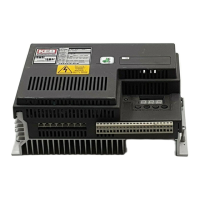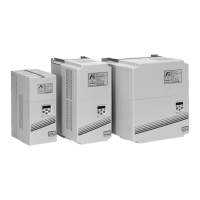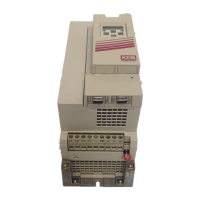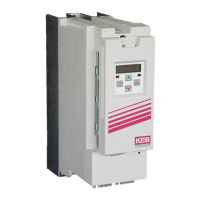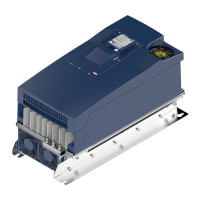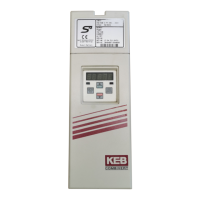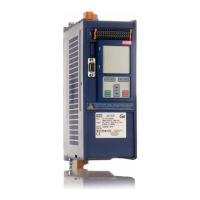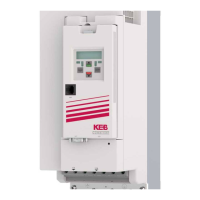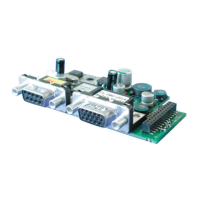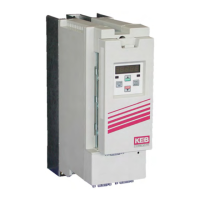40
Technical Data
Input resistance: 120 Ohm
Process data channel: 1Vpp
Parameter channel: EIA RS485 half duplex
Maximum input frequency: 200 kHz
Encoder line number: 1024 inc
Maximum cable length: <100 m
(based on signal levels, otherwise see below)
Cable length based on cable resistance
The maximum cable length is calculated as follows:
Length =
V - Vmin
=
7.5V - 7.0
= 35.7 m
Imax * R 0.2A * 0.07 Ω/m
where
Imax = supply current of encoder [amps]
V = voltage supply of the drive = 7.5V
Vmin = minimum supply voltage of the encoder
R = cable resistance (0.07 Ω/m) for KEB cables
The following Hiperface®-encoders have been tested for use:
• Stegmann SRS 50/60 Singleturn; SCS 60/70 Singleturn
• Stegmann SRM 50/60 Multiturn; SCM 60/70 Multiturn
However, this does not restrict the use of rotary encoder with same
speci cations of other manufacturers
Recognition of encoder loss or exchange
The recognition of encoder loss or exchange is a software function
and dependent on the encoder type. If the drive senses that the serial
communication to the encoder has stopped, it will trigger the error
E.ENCC.
If the encoder is replaced or disconnected, the drive will trigger an
error or warning that the encoder was changed. The drive will display
the error message E.ENCC and lock out operation by changing LF.3
to con guration mode. No further operation is possible.
If the encoder was exchanged the drive will auto reset the E.ENCC
fault but will remain in con guration mode because the user will need
to learn the new encoder position before operation can continue. See
section 5.11.1.
If there is an encoder triggered fault or problems with the encoder
cables, the E.ENCC error will not clear and the problems must be
diagnosed through parameter LF.26. To clear the E.ENCC error, it is
necessary to go to parameter 0.LF.26, press "Func" and then press
"Enter".
Installation and Connection

